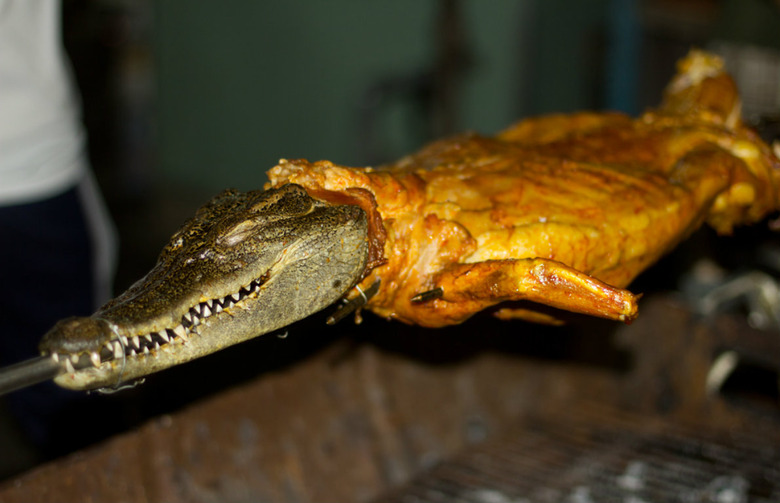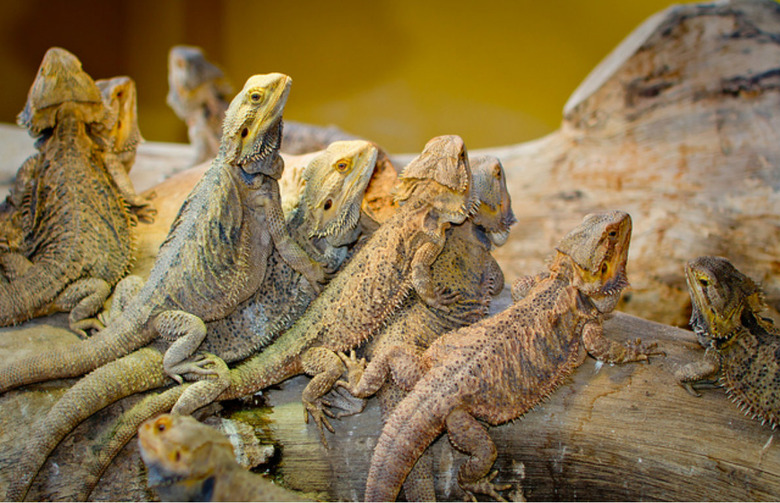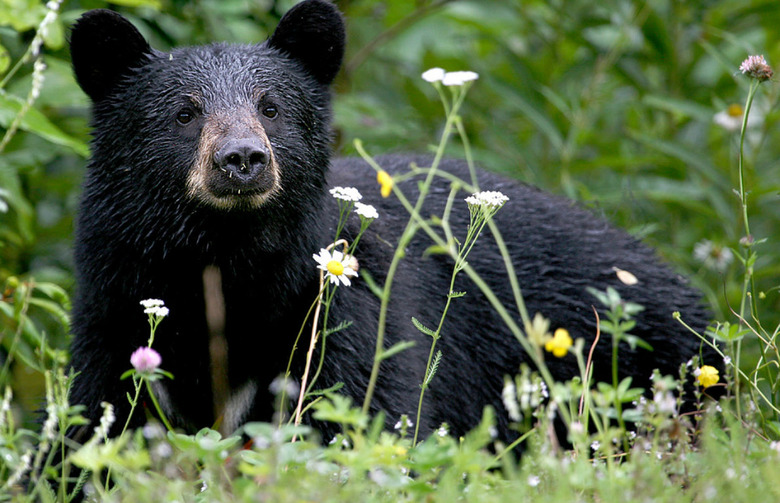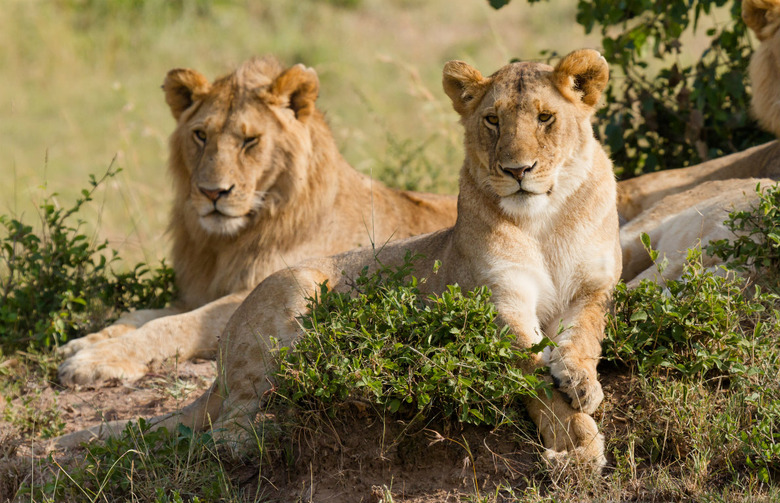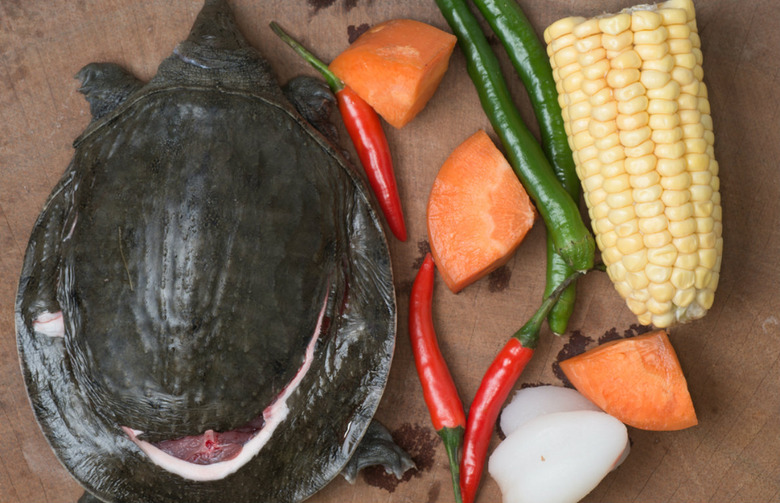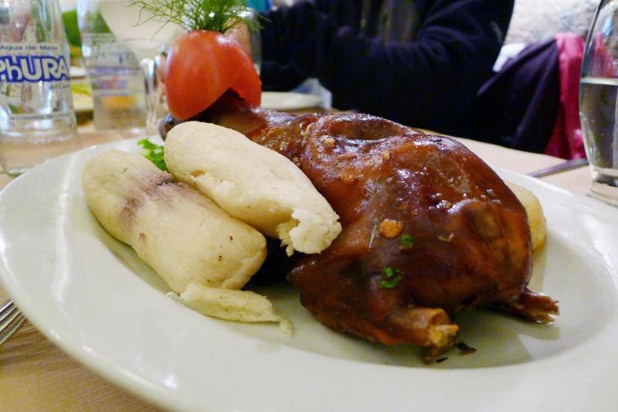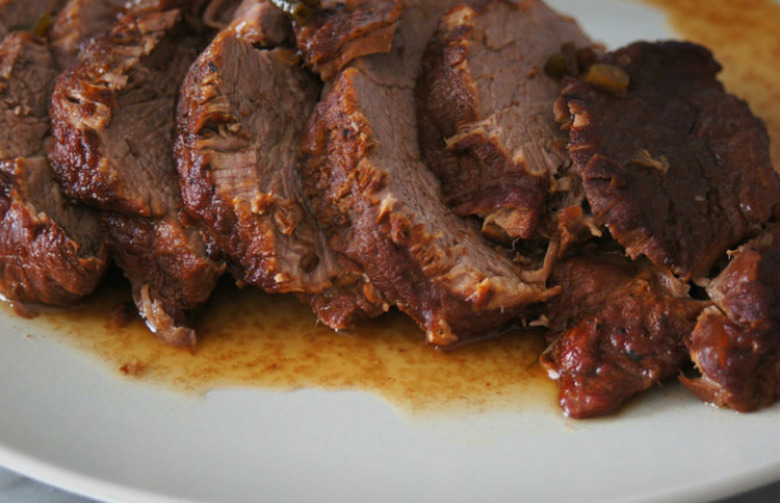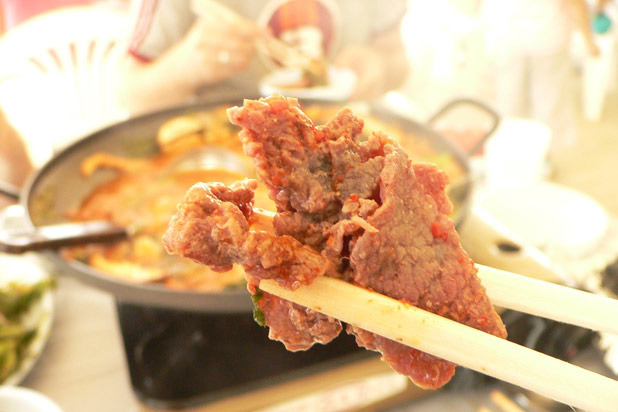A Beginner's Guide To Eating Exotic Animals (Slideshow)
Insects are a major protein source for millions and millions of people around the world, so you might as well try eating them too. Ants are pretty popular (a quick fry is all they need) as are their larvae, which goes great with scrambled eggs. In Mexico you'll find chapulines, little fried grasshoppers, adorning guacamole and other dishes. They taste like a crunchy bar snack, completely harmless. With most insects, the way to go is a quick fry. With the larger critters, just make sure you pluck the legs off before you eat them, so they don't get stuck in your teeth.
Alligator
There's actually a lot of meat on a gator, with most of it coming from the tail. It's lean and looks a lot like chicken, and can replace chicken, veal, or fish in most recipes. Because it's so lean it overcooks quickly, so sear it until it's cooked through but not past that. You can also bread and fry alligator nuggets. Like most reptiles, it has the texture of chicken but the flavor of fish.
Iguana
Iguana is eaten in most of the places where it's indigenous, mostly in Central America. In order to cook an iguana, you want to gut it, then cut it up like a chicken. Then give it a boil for about half an hour, pull all the meat off, and treat it as you would chicken or any other light meat. (Photo Modified: flickr/ see-ming lee)
Squab
A squab is a baby pigeon that's about four weeks old. You can treat it pretty much like you would a little chicken, roasting it whole in a pan. It's low in fat, so you might want to baste it with fat as it cooks. (Photo: flickr/Swiss James)
Black Bear
Say you're out for a hike when you happen upon a black bear who attacks you. Slaying it will work up a heck of an appetite, but hey, you've got hundreds of pounds of meat at your disposal now! Black bear meat is reportedly a bit metallic, and meat from young bears supposedly tastes better. In order to cook it, Dave Arnold suggests cooking it low and slow for about three hours. (Photo Modified: flickr/ jitze couperus)
Lion
Same deal here, for after you've slain the lion that attacks you. Lion meat apparently tastes like pork but richer (try to forget that you're basically eating a cat). There's also very little fat to go around, so you want to sear thin slices very quickly, or braise it for up to 24 hours. (Photo Modified: flickr/ Benh Lieu Song)
Turtle
There's a surprising amount of meat on a turtle, so you're going to want to chop it up, give it a boil, then shred the meat, similar to an iguana. The texture is similar to frog legs or lobster, and it goes great in a gumbo.
Guinea Pig
Pigs are delicious; guinea pig has "pig" in its name; therefore, guinea pigs are also delicious. In the Andes, guinea pigs are called cuy, and are a staple, with a flavor similar to rabbit. There are a couple traditional preparations: once it's skinned and gutted, give it a rub with oil, salt, pepper, cumin, and garlic, then roast it. You can also deep fry the whole thing. It'll take a little work to get at all the meat, but a guinea pig has enough on it to feed one person. (Photo: flickr/ ohocheese)
Camel
Like most other large, four-legged animals, camels can be butchered into a whole lot of cuts, many of which resemble beef. One main difference is that there's very little fat on a camel, so you want to make sure that you go medium rare or less, or else it'll be tough. Probably smart to braise. (Photo Modified: flickr/ kaetidh)
Ostrich
Ostriches are birds, but you wouldn't know it from looking at the meat. It looks a whole lot like beef, but is incredibly lean. The American Ostrich Association suggests you cook steaks to medium doneness at the maximum, or let it braise low and slow if you need to cook it through. Ostrich burgers are also quite popular, but are also very low in fat so can get dried out easily. (Photo: Flickr/ Nagyman)

